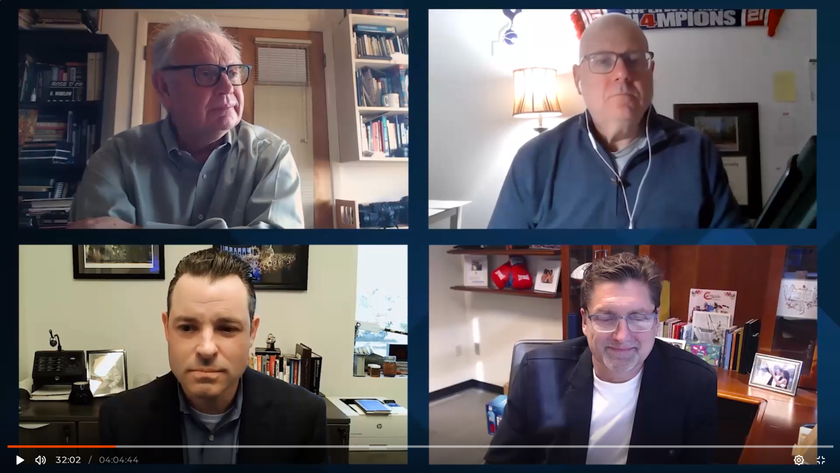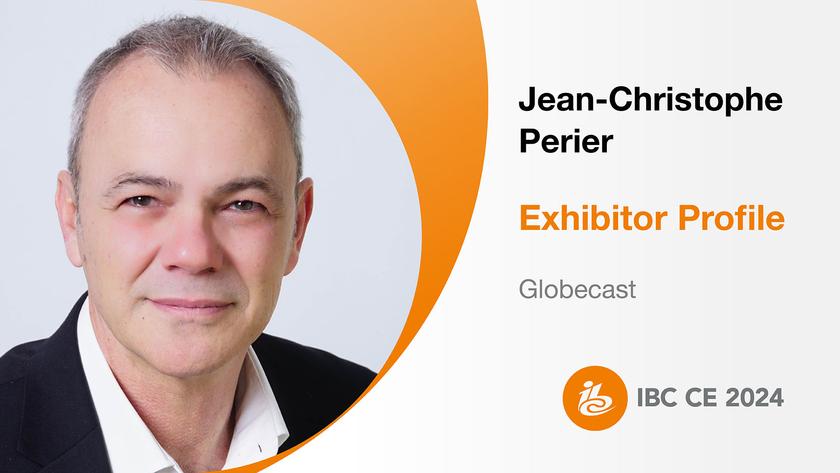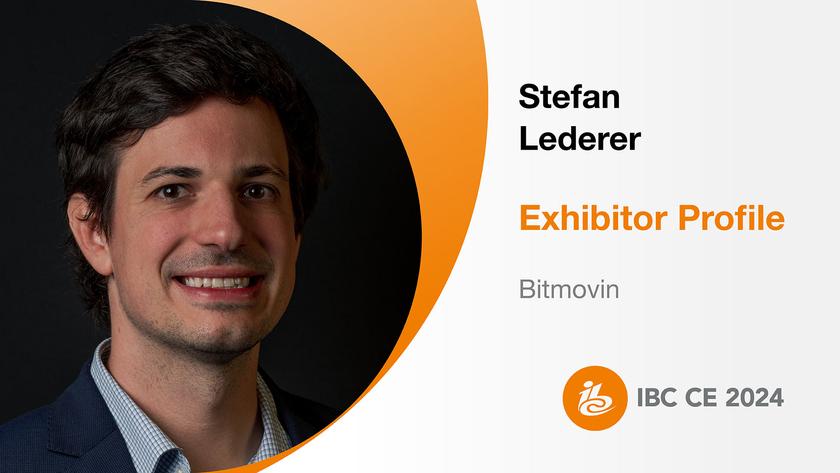Plenty of ATSC 3.0 Gear to Find on the NAB Show Floor
LAS VEGAS—Itʼs no secret that the first version of the ATSC broadcasting standard, now called “ATSC 1.0,ˮ was not universally loved when television stations switched to digital broadcasting more than a decade ago. The first commercial broadcasts of ATSC 1.0 began in 1998, and that essentially engraved the standard in stone—little, if anything has changed since.
Sure, digital HD broadcasting looks good when compared to analog standard-definition NTSC broadcasts, but ATSC 1.0ʼs MPEG-2 encoding standard was old by 2004, and its 8VSB modulation is power-efficient but reception-fragile, especially if you are mobile or trying to use an indoor antenna.
Thatʼs why there is so much interest in the ATSC 3.0 standard, which has leapfrogged over ATSC 2.0 (which is semi-compatible with ATSC 1.0) and is capturing the attention of manufacturers and broadcasters alike.
At the 2017 NAB Show, there will be several demonstrations of ATSC 3.0 technology—including over-the-air broadcasting of 4K video from Las Vegas TV station KLSV—and products for ATSC 3.0 will be in locations spanning the exhibition floor. These products include not only the expected exciters, transmitters and test gear, but also antennas with special features for ATSC 3.0 broadcasting. However, the real surprise may be the new receivers with integrated ATSC 3.0 tuners.
TRANSMISSION PRODUCTS
GatesAir (N2613) has been proactive in ATSC 3.0 development, and will have new transmitters to pair with its XTE exciter.

GatesAir Maxiva UAXTE transmitter
“We will unveil a new liquid-cooled transmitter range for UHF [ULXTE], and an air-cooled VHF [VAXTE], the latter veering both low-band and high-band,ˮ said Rich Redmond, chief product officer for the Quincy, Ill.-based provider of broadcast transmission technology. “The XTE exciter is an integral component of these transmitters. For broadcasters moving from UHF to VHF as a result of repack, we will also offer an ATSC 3.0 upgrade solution.ˮ
Unlike ATSC 1.0, ATSC 3.0 is getting lots of favorable attention internationally. This includes manufacturers such as Germany-based Rohde & Schwarz (SL1205).
“We will show a new ATSC 3.0 exciter solution at NAB this year, the first ATSC 3.0 exciter designed for commercial network operation, based on a real-time, software-defined coder,ˮ said Erik Balladares, director of the broadcast & media division for Rohde & Schwarz. “For network operators, this new approach ensures they are prepared for the signal-processing requirements of the future. The existing R&S THU9 and THU9evo high-power transmitters are easily upgraded to include our new ATSC 3.0 solution.ˮ
TeamCast (SU6505) will debut its Vortex II, a new dual-cast ATSC 1.0/3.0 exciter to help broadcasters to prepare the commercial deployment of the new ATSC3.0 DTV system in their markets.
For a product that’s further up the transmission chain than the transmitter, Dielectric (C2613) will show its new TFU-GTH-BB broadband pylon UHF antenna, which uses the companyʼs “FutureFillˮ technology.
“FutureFill is a technology that enables adjustment of the antenna’s elevation null to be adjusted in the field,ˮ said Keith Pelletier, vice president and general manager for Dielectric in Raymond, Maine. “It’s applicable to either pylon or panel antennas. Increasing the null fill of the antenna helps boost the signal and saturate the coverage area, which is required for ATSC 3.0 type services such indoor mobile reception.ˮ
A complete ATSC 3.0 broadcast chain—from the glass on the lens to a consumer TV—will be the big feature at the Hitachi-Comark booth.
“[We will show our] ATSC 3.0 Starter package, which incorporates the encoding, streaming, broadcast gateway, and scheduler functions,ˮ said Joe Turbolski, director of sales operations for Southwick, Mass.-based Hitachi-Comark. “This resides at the broadcasters studio or network operations center (NOC), and provides the ATSC 3.0 STL feed to each of the transmitters, which feature our new Exact-V2 IP optimized DTV exciter. On the RF side of the demo, we will have our QoS-1000RT RF signal analyzer with new ATSC 3.0 analysis software. Feeding the ATSC 3.0 demo at NAB will be live content from Hitachi cameras and master control.ˮ
NEXTGEN TV HUB
South Korean broadcasters plan to have over-the-air ATSC 3.0 broadcasts of 4K video from the 2018 Winter Olmpics in PyeongChang. For this reason, Korean consumer electronics manufacturers are generally ahead of the curve with respect to receivers and off-air tuners.
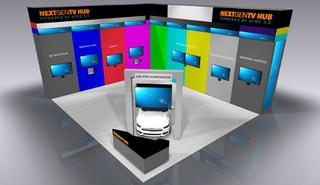
NextGen TV Hub will be located in the central lobby of the Las Vegas Convention Center.
Much of this technology—both on the transmission and receiving ends—will be up and working in the NextGen TV Hub in the central lobby of the Las Vegas Convention Center. LG Electronics and its Zenith R&D Lab are among several companies actively engaged in planning for the NextGen TV Hub at the NAB Show.
“LG will be providing core technologies—including 4K receivers with embedded second-generation ATSC 3.0 chips—for broadcast demonstrations at the Hub,ˮ said Jong G. Kim, PhD senior vice president for LG and R&D president for Zenith. “I think the NAB Show is an important inflection point for ATSC 3.0. With the lion’s share of the standard done and the FCC moving ahead on its rulemaking, broadcasters will be making key decisions about the future of television enabled by 3.0.ˮ

Jong G. Kim, senior vice president for LG and R&D president for Zenith
Many companies exhibiting at the NAB Show will participate in the NextGen TV Hub as well as feature ATSC 3.0 products in their booths. One place to find a cluster of companies with relevant products will be the ATSC 3.0 Pavilion in the North Hall. Located within the Futures Park, the ATSC 3.0 Pavilion will feature products from companies such as Harmonic, DekTek, Dolby Laboratories, Triveni Digital, BBC and several more.
TESTING THE SIGNAL
It’s not only about exciters, transmitters and receivers—there’s also considerable activity in other categories of broadcast equipment. For example, test and measurement gear. Several manufacturers will show equipment and processes to maintain the quality of ATSC 3.0 signals.
One such company is Qligent (N6520), which will show its Vision ATSC3 cloud-based monitoring and analysis system. Vision-ATSC3 will provide broadcasters with a logical workflow to correlate and analyze multi-layer data from nine points along a signal path.
“ATSC 3.0 represents an entirely new headend and distribution model for broadcasters, with new services, new encoding, new multiplexing, new transport streams and new waveforms all based on native IP networking and distribution,” said Ted Korte, COO for Melbourne, Fla.-based Qligent. “The fact is that everything changes with this model.”
Block diagram of the glass-to-glass ATSC 3.0 demonstration at the Hitachi-Comark booth
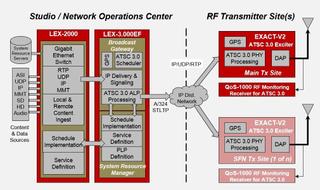
Click on the Image to Enlarge
Triveni Digital (N2031) will show ATSC 3.0 upgrades to its StreamScope XM MT Monitoring and Analysis system and StreamScope XM RF Monitoring System. It will also introduce ATSC 3.0 “starter kits” which include everything from file-based monitoring to live encoding and over the air transmission, leveraging the company’s GuideBuilder XM signaling and announcement generator and StreamScope XM MT quality assurance for ATSC 1.0/3.0.
SESSIONS
There will also be sessions addressing ATSC 3.0 topics, including a Super Session titled "Ultra HD Broadcasting Comes of Age." The Broadcast Engineering and Information Technology Conference will have many sessions specifically targeting ATSC 3.0, including such titles as "Exploring Antenna Polarization Options for ATSC 3.0 Environment," "Up to the Minute News of the Progress of ATSC 3.0," "Transmission Site Planning for ATSC 3.0" and "Planning for Spectrum Repacking and the Transition to ATSC 3.0." There will also be relevant sessions in other specialties, such as "Securing the Future: ATSC 3.0, Workflows and DRM" that will be offered in the Cybersecurity Pavilion (Central Hall).
There are many more sessions with content for ATSC 3.0, so be sure to check the NAB's website to read up on the sessions' content and plan your time. Keep in mind that session begin on Saturday, April 22 and continue through Thursday, April 27.
It will actually be hard to miss ATSC 3.0 at the NAB Show this year, as many companies are participating and the standard will be prominently featured around the Las Vegas Convention Center. With the spectrum repack virtually certain and channels likely to change, this may be the best time to include a standards change (such as ATSC 3.0) into the mix.
Consumers continue to buy 4K televisions and more than ever are open to the sort of image and sound enhancements possible with ATSC 3.0 broadcasting. NAB Show 2017 will have the products and content necessary to navigate through this changing television landscape.
For more on the NAB Show, visit www.nabshow.com.
For more on this subject, visit our ATSC 3.0 silo.
Get the TV Tech Newsletter
The professional video industry's #1 source for news, trends and product and tech information. Sign up below.
Bob Kovacs is the former Technology Editor for TV Tech and editor of Government Video. He is a long-time video engineer and writer, who now works as a video producer for a government agency. In 2020, Kovacs won several awards as the editor and co-producer of the short film "Rendezvous."


